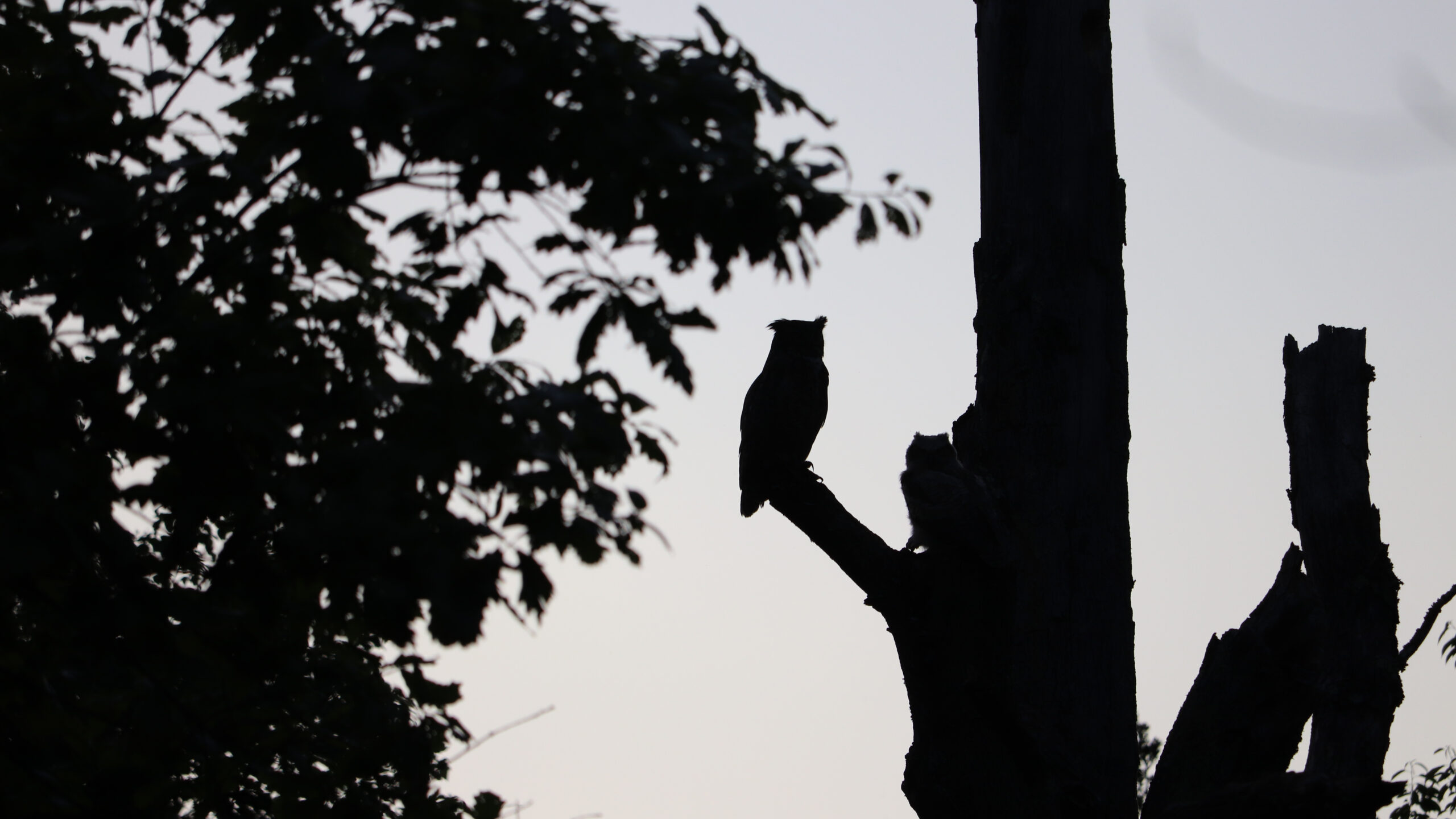September sure came in a hurry…but listen to what the world around you is telling you.
SEPTEMBER
Getting to Know the Natives In Your Backyard, A Month at a Time
I could not see the rain but I could hear it. I could hear how the rain changed the sounds of the cars going by on the road outside the window. Wet rubber tires on wet pavement sound different than tires on dry pavement. Our sensory perceptions to the world around us are surprisingly strong and often we don’t even realize that they are getting used.
It is like when September rolls over on the calendar you notice a change in the air and a change of color. There is a little less green and little more golds and yellows. The smells of sweet clover are replaced with the smells of drying leaves. I practically rely more on what the world around me is saying than what the numbers on the calendar say. One year to the day, (minus one, but I am going to attribute that to the leap day in February 2020) I saw an osprey in my backyard. Coincidence, maybe. But a wildlife calendar may be just as honest as a paper one. The reason I knew it was the same day is because my Google photos popped up saying “A Look Back on this Day” and there it was.
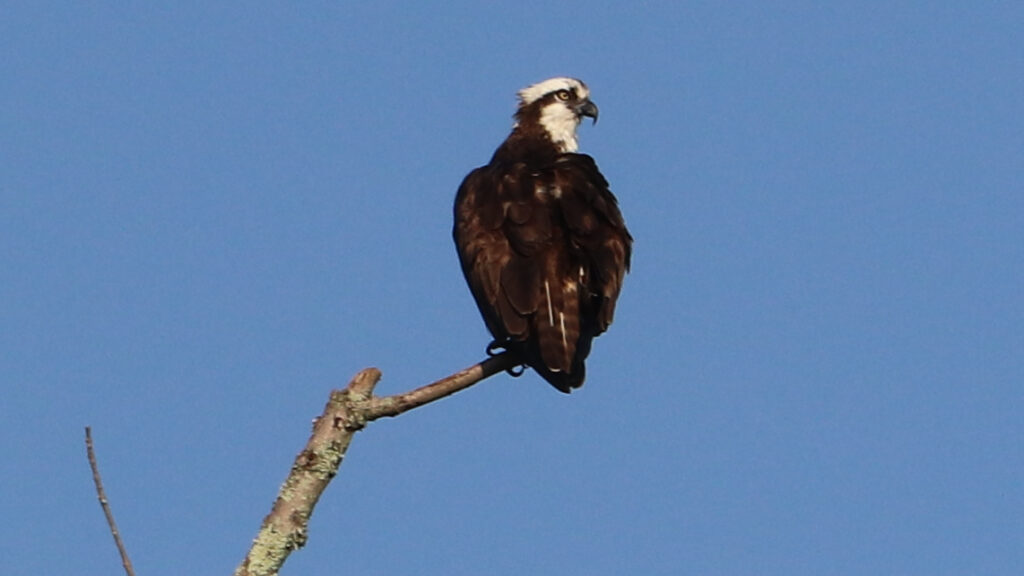
A wildlife calendar may be just as honest as a paper one.
Mid to late September is always a strange time of year. Weatherwise anyways…you can have really chilly nights (great for owls) or you can have really hot afternoons (great for any lingering butterflies). But it is also a time of transition. You may notice a lack of bird activity in your yard…with a simultaneous increase in yellow-jackets. The night crickets and cicadas are barely able to make a sound as much as they would like as the temperatures slowly cools at night.
Yet, with a yard full of native plants, you can expect to still have some color lingering about that isn’t necessarily the yellows and golds. Snakeroot is blooming white, and great blue lobelia is blooming a lovely shade of lavenblue. (Not quite lavender, and not quite blue). And the asters all shades of pink, purple, and lavender.
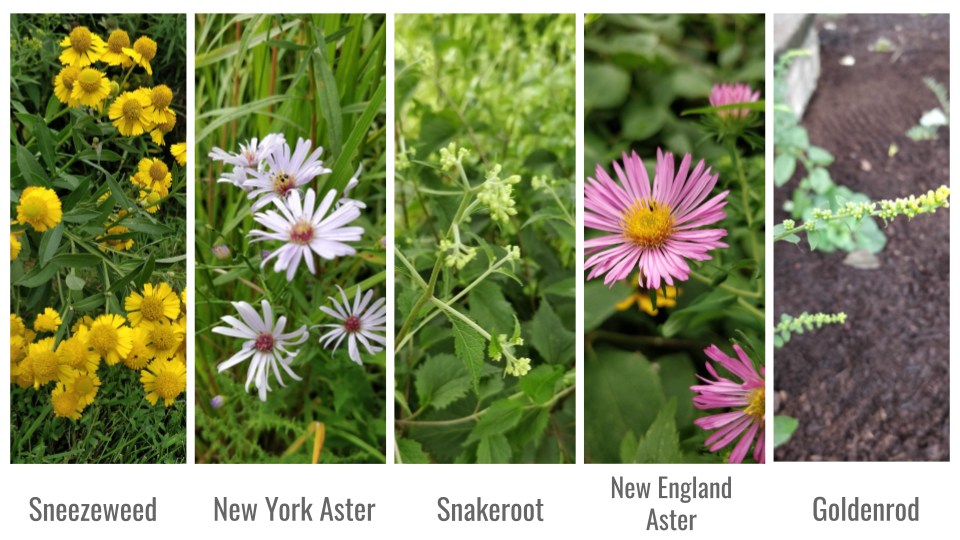
Sneezeweed (Helenium autumnale)
New York Aster (Symphyotrichum novi-belgii)
Snakeroot (Ageratina altissima)
New England Aster (Symphyotrichum novae-angliae)
Wreath Goldenrod (Solidago caesia)
The butterflies are still lingering about and even some grasses are just starting to come into their own like purple lovegrass (Eragrostis pectinacea), meanwhile the pollinators are fastidious on the asters.
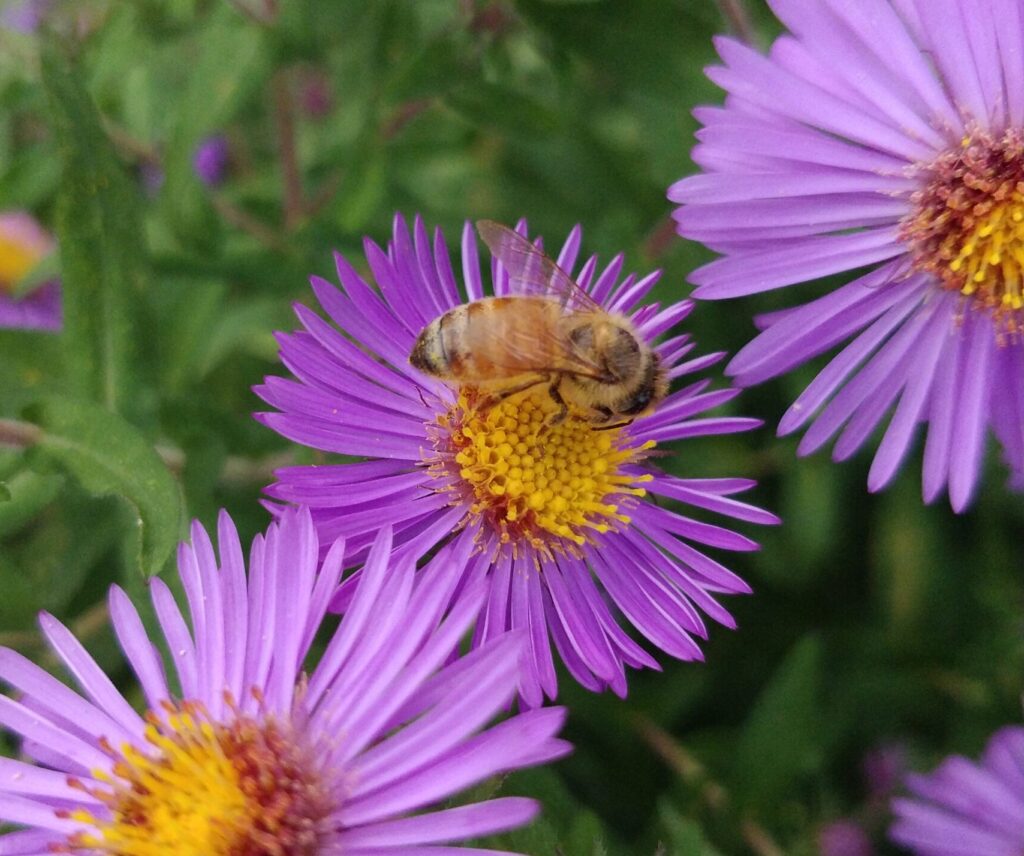
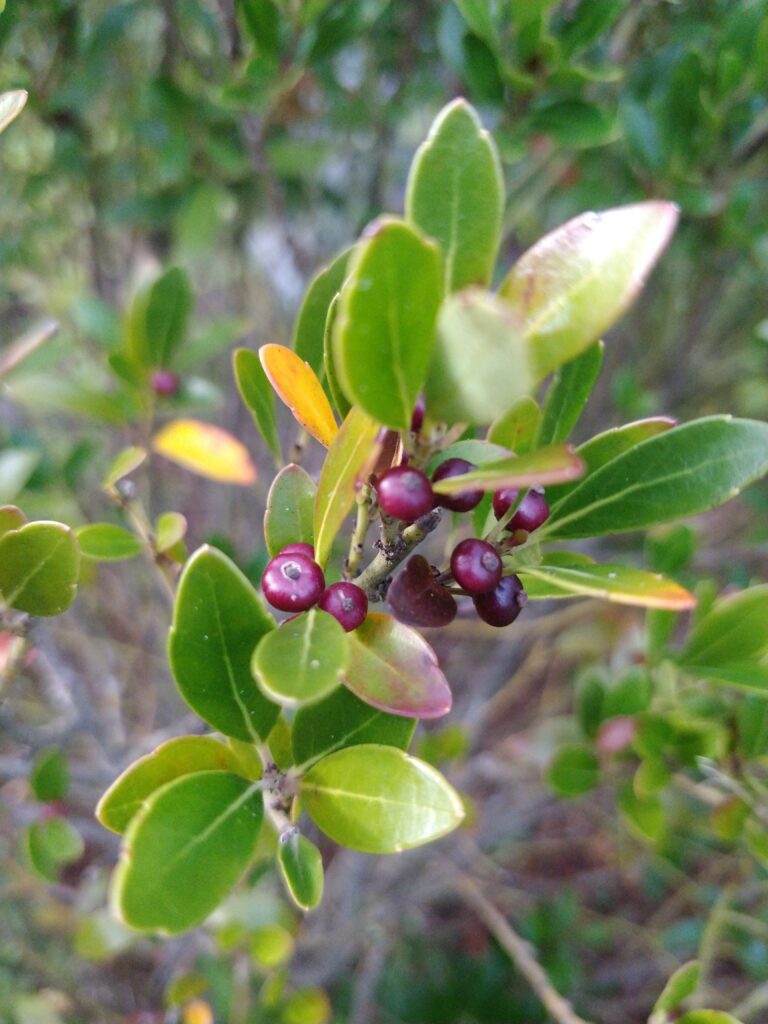
And, just as some like to “prepare for winter” as noted by the recent Harvest Moon that was full on September 20, so too do plants get ready for winter. I came across the berries (see photo above) of the female plant of my Inkberry Holly, or Ilex glabra. By winter, the berries turn a dark color and are a beloved food source for birds. (Please note, if you want berries in your yard, you will need both a female and male plant because they are dioecious. The females need a male pollinator in order to produce berry-like fruits.) You may even see a squirrel burying up a nut or acorn, readying himself for the changes ahead.
Listen for your birds and watch your plants, they are a living calendar.
It is no wonder that it is also around this time that I start craving pumpkin and all the warming spices like cinnamon and clove with a hit of nutmeg. Perhaps I will get to a hazelnut this year before the squirrel finds it. Taking in the changing air and the different rays of light leaving new shadows, it makes looking outside just as telling as the numbers on a paper calendar. Listen for your birds and watch your plants, they are a living calendar.

